There’s more than meets the eye when it comes to sewing blogs.
That’s true whether you need an online resource or are thinking of starting a sewing blog.
Whichever category you fall into, this article will answer your questions about sewing blogs, how to start them, which ones stand out from the crowd, and why.
Contents
What Is a Sewing Blog?
Sewing blogs are blogs that talk their readers through various sewing projects.
Content differs depending on what you’re looking for and your ability.
Some sewing blogs aim to coach novice sewers through easy projects.
Others dive deeply into the weeds of interpreting patterns and sewing from scratch.
What Does a Sewing Blogger Blog About
The content of sewing blogs varies depending on the blog.
Some focus on a particular sewing skill, like:
- Embroidery
- Quilting
- Dress-making
But some topics come up irrespective of the blog.
These include things like:
- Blogger’s current project
- Video tutorials
- Fabric comparisons
Whether they blog for novice or advanced sewers, most sewing blogs split their posts between instructive how-tos, discussing sewing tools and equipment, and posts that showcase their projects.
Normally, project-inspired posts will also offer steps and patterns for the curious sewer to replicate the project at home.
What Is Included in a Sewing Blog?
So, that’s what sewing bloggers blog about.
But what can you expect to find on these blogs?
Let’s explore the topics they cover further.
- Video tutorials are a staple of sewing blogs.
These walk you through everything from how to load a bobbin to seam allowance.
- Fabric nuances are another popular blog feature.
These articles walk you through the different types of fabric, what to use them for, and why you won’t ever quilt with twill.
- Product Reviews are another staple of sewing blogs.
They are also an excellent way for bloggers to acquire income through affiliate links.
They are useful for blog readers too because they talk you through the pros and cons of things you might be equivocating about buying, like rotary cutters.
Other Things Included in a Sewing Blog
Of course, that’s only the tip of the metaphorical iceberg.
Here are some other features commonly found on blogs about sewing.
- Product comparisons are another common feature of sewing blogs.
All sewers have their favorite tools and are unapologetic about making their case.
We learned to sew on an antiquated Singer Sewing Machine, so anything modern was revolutionary.
- Sewing patterns play a vital role in sewing blogs.
They are an ideal way to source patterns for upcoming projects without trawling through your grandmother’s hand-me-downs or spending hours in sewing shops.
Best Sewing Blogs
Let’s look at examples of some of the best sewing blogs out there.
But first, how many sewing blogs are there?
How Many Sewing Blogs Are There?
The internet is rife with sewing blogs.
Sewing is such a diverse hobby that they cover various topics and types of sewing.
And as sewing becomes an increasingly popular hobby and people wonder how to start a blog, the number continues to rise.
Sewing Blogs for Seamstresses and Tailors
But not all blogs are created equal.
Much like pet needle books and sewing machines, many sewers have their favorite blogs.
Tilly and the Buttons
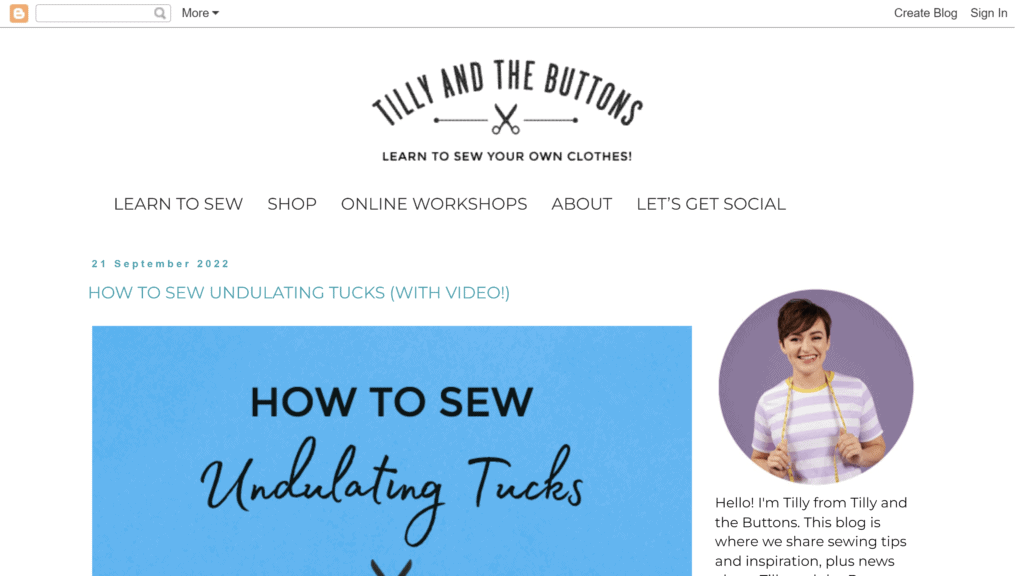
Tilly and the Buttons is an excellent blog for seasoned and beginner sewers alike.
It offers a variety of patterns and tutorials to help you fashion the clothes you always wanted but couldn’t find anywhere.
Oonaballoona
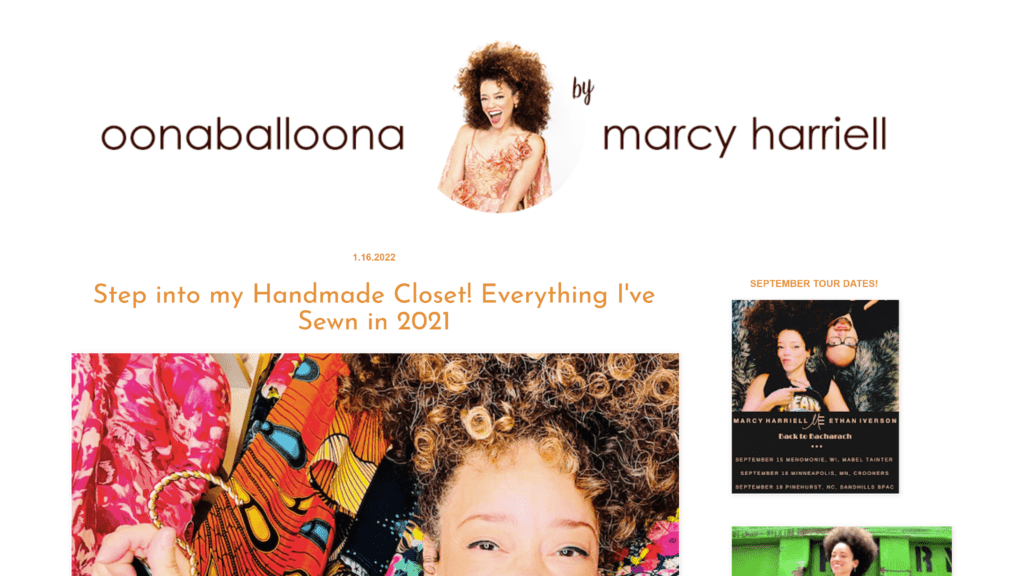
Sewers are famous for their massive stashes of fabric.
But what’s charming about Oonaballoona is that it’s a sewing blog that offers an alternative image.
Much of Oonaballoona’s unique sewing blog flavor comes from Oona’s adeptness at refashioning old clothes into new ones.
They’re fascinating projects, and it’s an excellent skill for any sewer to build.
Gertie’s New Blog for Better Sewing
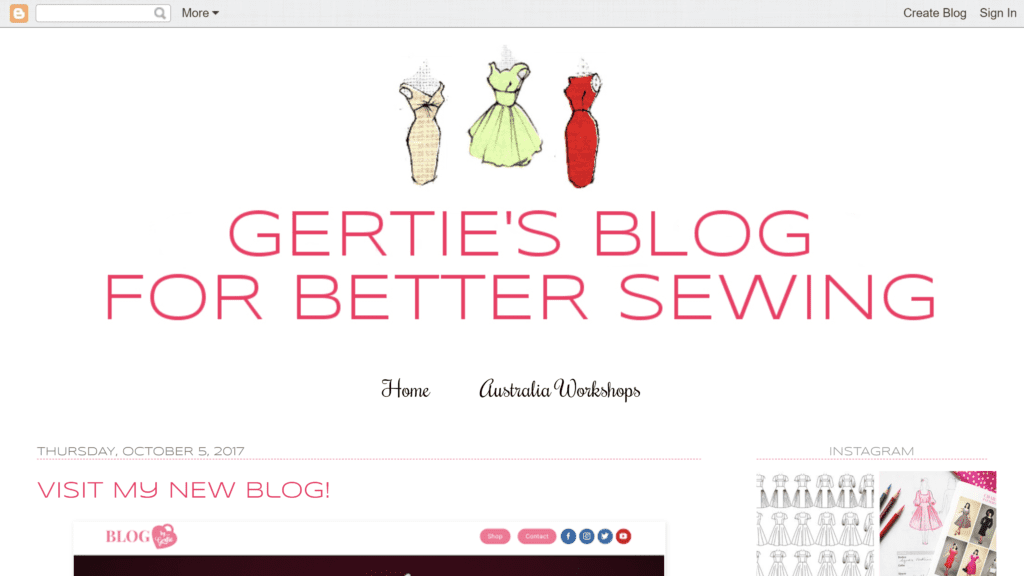
Given the rising trend for vintage clothing, Gertie’s New Blog is an excellent sewing blog resource.
Few people can fashion vintage-style clothes as comprehensively as Gertie.
Her old blog remains available and is also an invaluable tool.
However, because of her increasing popularity, you won’t see these blogs updated as routinely as other sewing blogs on this list.
The Palmer/Pletsch Blog

The Palmer/Pletsch blog believes sewing should be accessible to everyone.
To that end, the joint hosts wrote and published several books.
Their blog not only makes 1970s fashions the kind of thing anyone can sew but offers tips, tricks, and insights into how sewing those fashions can look easy.
SallieOh
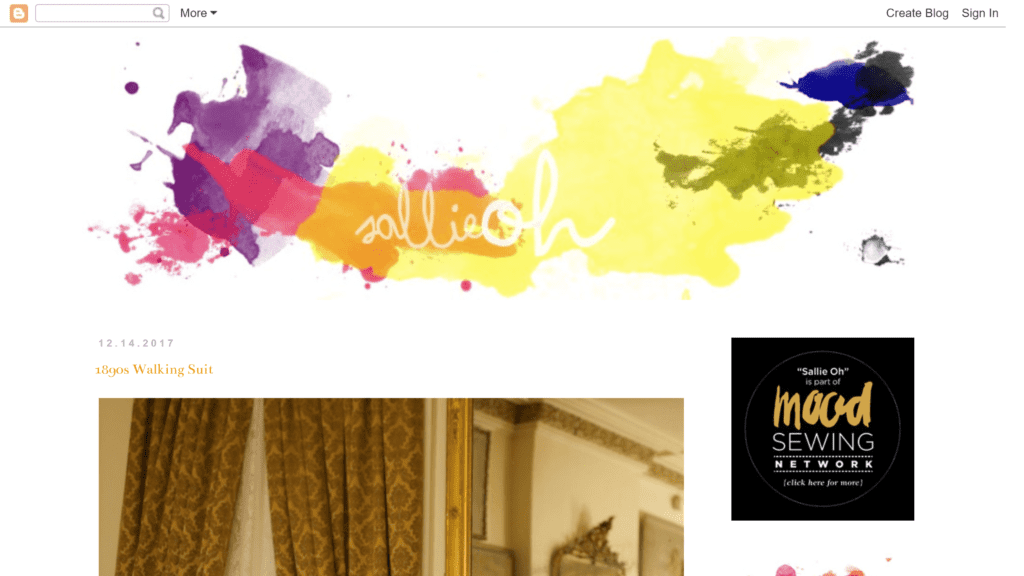
SallieOh is an excellent sewing blog that coaches its bloggers through many vintage-style fashion projects.
Some of these hail from the 1970s, and some go back as late as 1890.
It’s the kind of sewing blog that has something for everyone.
The Crafty Gemini

Unsurprisingly, there are different types of blogs that make money, even in the world of sewing.
So far, we’ve talked primarily about blogs for sewing clothes.
The Crafty Gemini is different because she goes beyond clothes.
They feature, but she also walks you through sewing totes, makeup bags, and quilts.
By Gum, By Golly
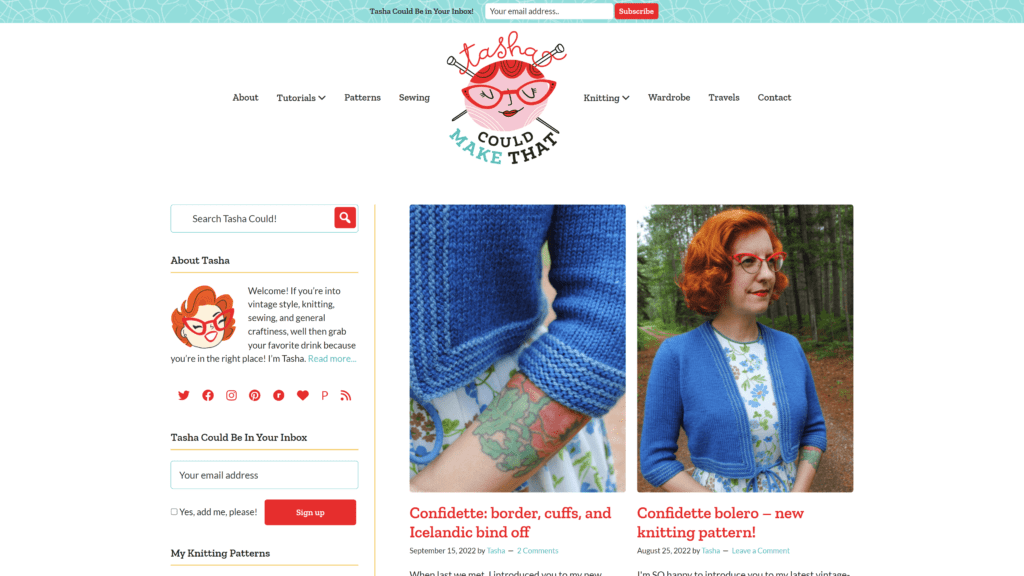
If you need motivation for starting a blog, By Gum By Golly is a wonderful place to start.
This sewing blog is full of resources, from patterns to tutorials.
It focuses primarily but not exclusively on 1940s styles.
Male Pattern Boldness
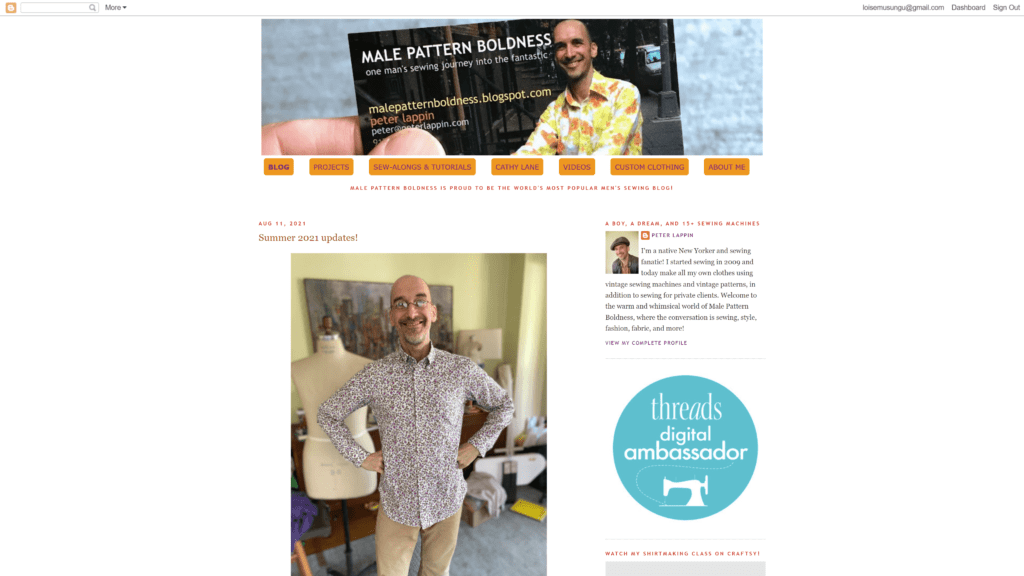
Women don’t have a monopoly on sewing blogs.
Peter Lappin’s Male Pattern Boldness is an excellent example.
His blog deep-dives into men’s fashion, offering video tutorials, patterns, and custom clothing.
The tone is warm and whimsical, and importantly, his instructions are straightforward.
Cashmerette
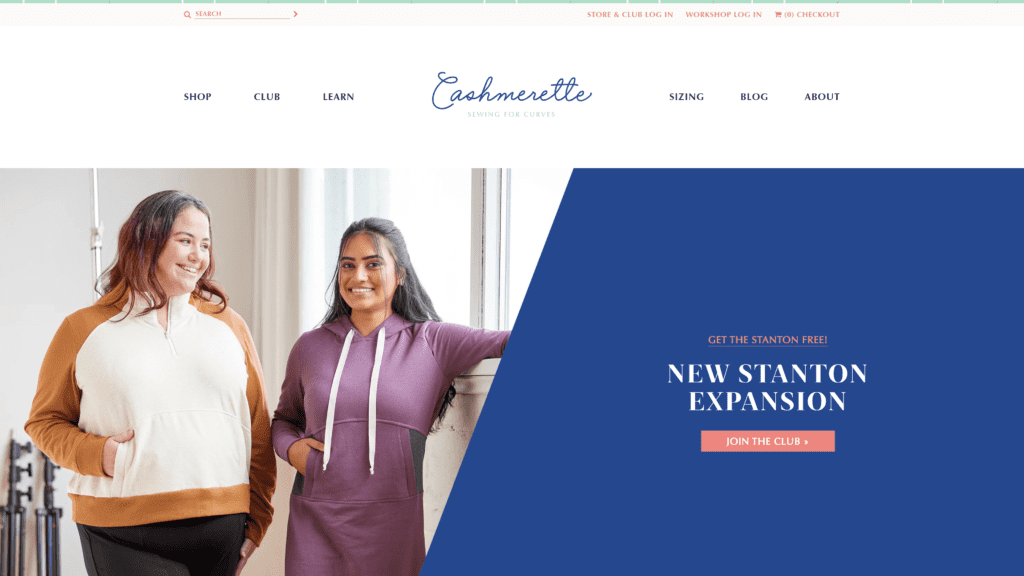
Cashmerette began as blogger Jenny Rushmore’s gentle pushback against the fashion industry’s insistence that people look a certain way.
Her patterns and tutorials offer sewing guidance and embrace many different body types and shapes.
Needle ‘n Thread

Needle ‘n Thread is one of our favorite sewing blogs.
It focuses on detailed work. It also offers guidance in gold- and whitework.
The patterns on offer are gorgeous and eclectic as these skills sound, they enhance sewing projects, ranging from tablecloths to blankets.
Do Sewing Blogs Make Money?
You’ve started your very own webpage and all is well and good.
But, can you make money blogging?
Yes! Bloggers can make good money from their blogs.
How they do this depends on the blog.
Here are the most common ways sewing blogs make money.
How Do Sewing Blogs Make Money?
With that in mind, let’s look at some of the most effective ways sewing bloggers make money.
Workshops
Sometimes, a professional sewing blogger will hold an in-person workshop.
It’s an opportunity for you to see their work off-camera and get valuable input from a professional while you sew.
Typically, these are local events to save on travel costs for the blogger.
However, that doesn’t discourage international attendance if the blog is popular enough.
There’s usually an entrance fee and occasionally an opportunity to sell patterns and ready-made sewing.
But the real point of these workshops is to allow sewers to come together and swap tips, tricks, and techniques.
Books
Some bloggers, like Palmer and Petch, compile their most popular sewing advice and publish it in books.
This is an excellent way to build on your existing blogging platform, especially for moms who blog.
The blog gives you a place to broadcast your book’s publication, and the books allow you to advertise the blog.
Better than that, the finished product allows you to offer long-term readers a resource that puts all your most useful blogging advice in one place.
And if they like it, they’ll buy it for fellow sewers.
That gives you increased visibility and can extend your reading audience.
Affiliate Programs
One of the most effective ways for bloggers to make money from their writing is through affiliate programs.
These programs allow companies to send a gratis product to the blogger in exchange for a review that links to the product.
Affiliate programs are an invaluable resource, especially for niche blogs like sewing that require you to acquire a high degree of extra equipment to do your work.
The gratis product provides an opportunity to try the product without purchasing it.
And if you persuade other people to buy the product, there’s a bit of extra income every time they click on your embedded product link.
Ads
Ads are an uncomplicated way for bloggers to earn an income.
It means sacrificing website space and layout to integrate them into your page.
But it’s worth it for the guaranteed monthly earnings, especially when readership is low.
How Much Do Sewing Blogs Make?
How much sewing blogs make varies wildly.
Some average between $15,000 and $50,000.
An exceptionally lucky sewing blog might average between $50-100,000, but only if it branches out to encompass several crafts.
But these are approximations.
Some blogs earn significantly lower, however many patterns they sell.
The success of the blog determines how much you earn.
That, in turn, depends on:
- Internet visibility
- Frequency of posting
- Quality of content
- Size of readership
Products to Promote and Sell on Sewing Blogs
Since product promotion is vital to a successful blog, what should you be promoting on your sewing blog to ensure it covers its costs?
Patterns
Another way sewing blogs earn money is by selling patterns.
Sewers can be like magpies and collect as many patterns as fat quarters.
If a pattern takes our fancy, we’re likely to try and acquire it, even if it costs a bit of money.
They are also a handy way for new sewing blogs to make money, especially if you haven’t yet produced enough content for a book.
Books
However, if you have enough content for a book, then your blog is the perfect place to promote it.
Linking to it during holiday seasons and prominent sales seasons is an excellent way to earn extra income.
Similar Blogs to Check Out
As discussed, the internet is full of craft-inspired blogs.
Here are some sewing-adjacent blogs that will pique the interest of crafty individuals.
Knitting Blogs
Knitting blogs come in all shapes and sizes.
There are advanced knitting blogs with inscrutable patterns and blogs for the novice which walk you through how to knit one, pearl two.
Craft Blogs
Craft blogs defy description.
Some are sewing-related and coach you through hobbies like crochet or spinning.
But others offer everything from DIY to woodwork.
The wonderful thing about craft blogs is that there’s something for everyone.
If you need a break from squinting at needles that won’t thread, then this is the place to start.
Quilting Blogs
Quilting blogs are an excellent resource if you want to expand your sewing repertoire to stitch something a bit more complicated or just look at some beautiful finished products.
Frequently Asked Questions
That’s everything you need to know about starting a sewing blog.
But before you go, here are some other questions aspiring bloggers ask.
Is learning to sew hard?
There’s nothing complicated about sewing at its most basic.
But if you want to do more than sew on a button, it becomes progressively more complicated.
That said, there’s a reason the Girl Guides have a sewing badge.
With the right teacher, the skills needed are skills anyone can learn, whatever their experience level.
It’s developing talent that takes time.
Is sewing cheaper than buying?
Not always.
Many people think sewing is a cheap option.
But once you’ve spent money on the thread, fabric, and equipment, it might have cost less to buy something ready-made.
It all depends on what you want to sew, and how confident a sewer you are.
Because the other thing you expend on a sewing project is time, and there’s no getting that back.
Wrapping Up
There are many motivations for starting a blog, and having a passion for sewing can be one of them.
Can you make a living from a sewing blog?
It takes time and effort, but it’s possible.
Many of the best blogs we cited here earn enough to support their bloggers.
So will your sewing blog, as long as you remember to integrate affiliate products, sell your patterns and update regularly.
Not only that, but you need to make sewing accessible.
All the best blogs do, and rightly so.
Sewing doesn’t have to be complicated unless you want it to be.
The important thing is that you and your readers have fun doing it.




